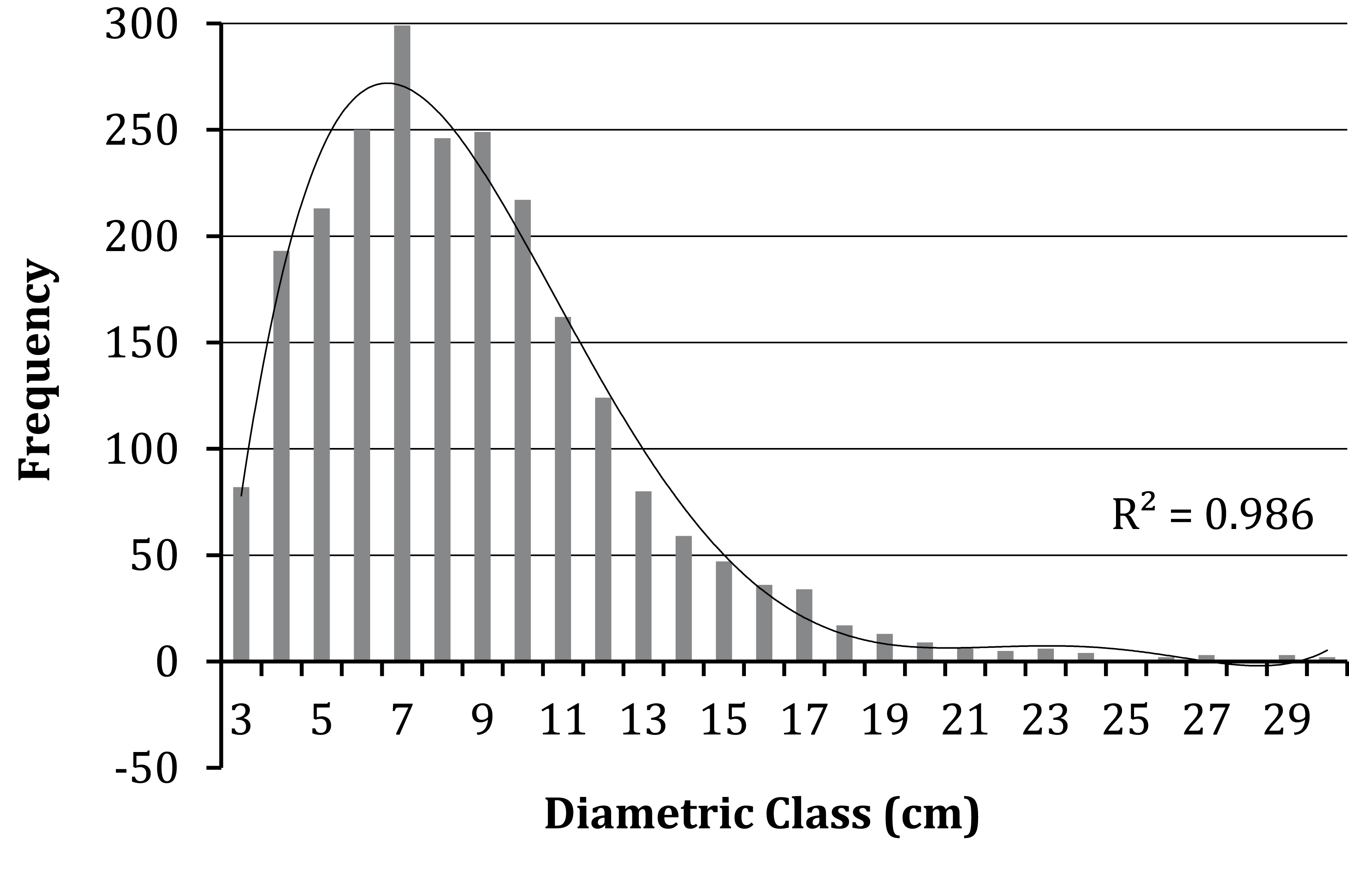Biomass function for Acacia caven (Mol.) Mol. distributed in the dry land areas of south central Chile
Keywords:
espino, steppe, semi-arid regions of Chile, silvopastoral systemsAbstract
Acacia caven is a key native species in the dry land region of south-central Chile. It is a species of high social and productive interest to landowners. Therefore, this study proposes a biomass function for A. caven, which involves incorporating predictor variables that are easily obtainable in the field and less complex than those used in already existing functions for the species. Due to the multi-purpose nature of the species and its potential for silvopastoral systems, these functions typify important planning tools to improve the management of this plant resource. To generate the biomass function, the methodology of destructive analysis of components was used on a total of 71 trees. These trees were selected, cut and weighed in the field to generate and test different models. Statistical analysis models were used and root collar diameter, diameter at breast height and total height served as predictor variables, resulting in a good adjustment of the models (R2 adjusted the 0.97 for stem-branches, 0.90 for stems and 0.96 for total biomass), with high correlations between estimated and real values. These functions may be used safely in plant formations of A. caven located in the same distribution area and within the range of the used variables. In the future, however, they require validation with new measurements in other sectors than the area considered to increase geographical representativeness.

Downloads
Published
Issue
Section
License
Aquellos autores/as que tengan publicaciones con esta revista, aceptan las Políticas Editoriales.


